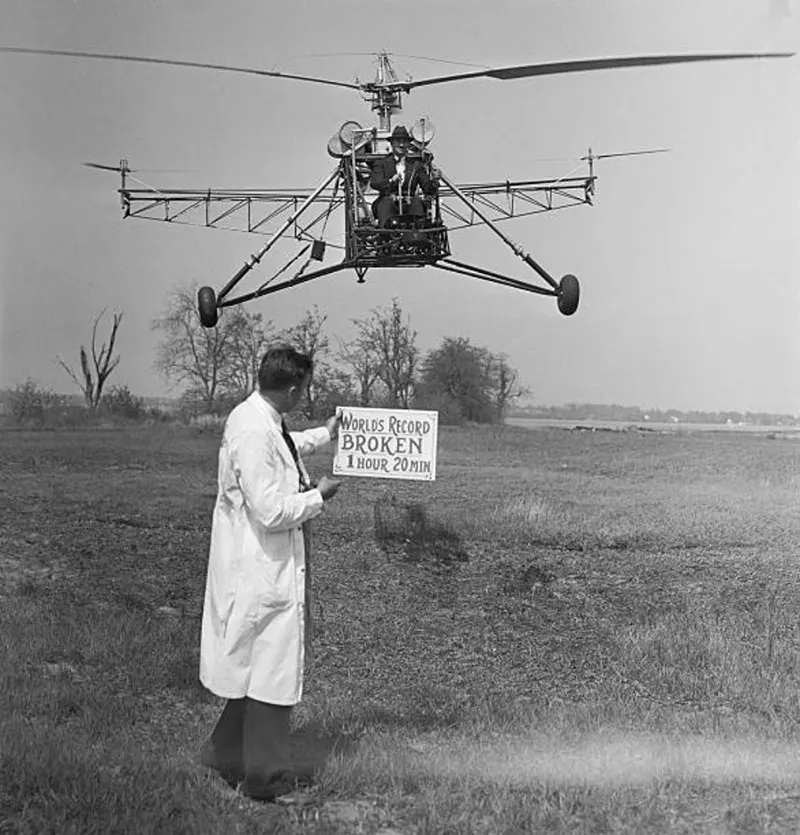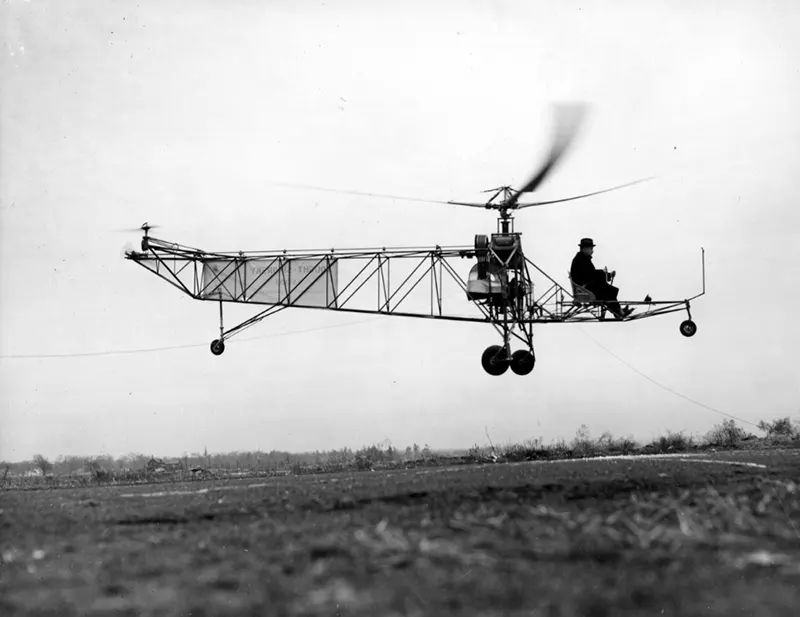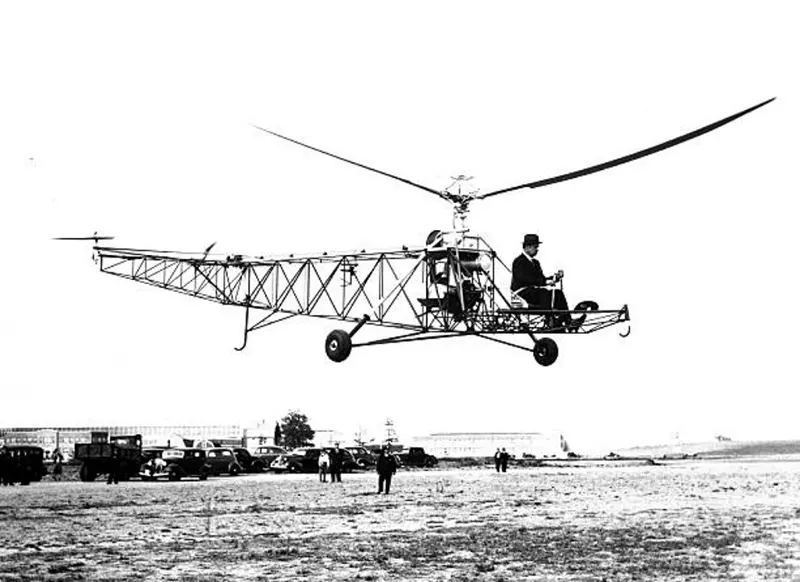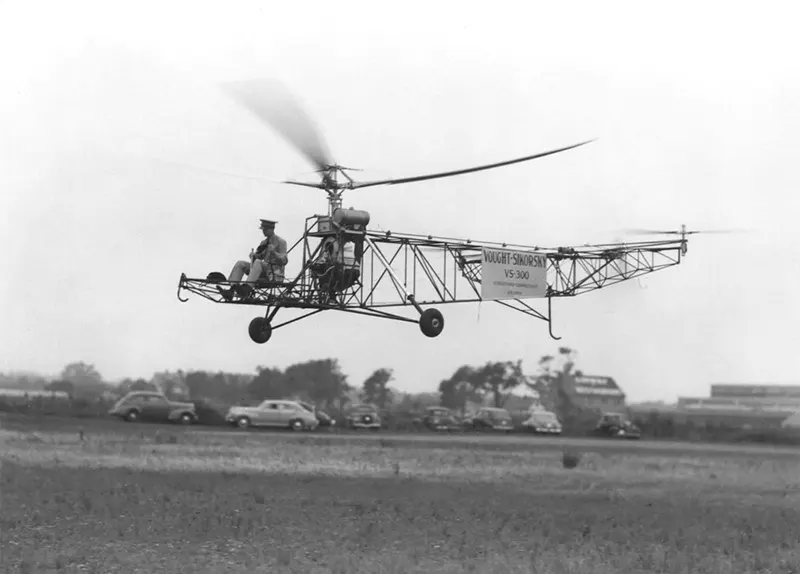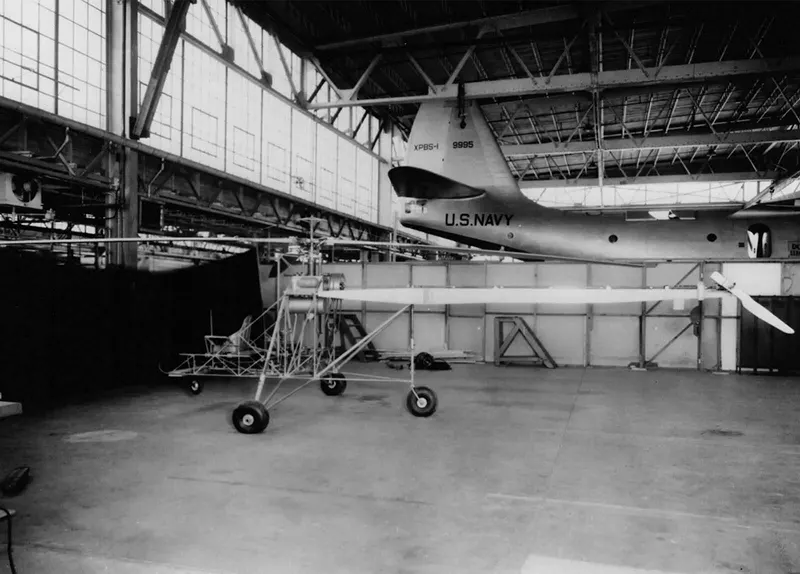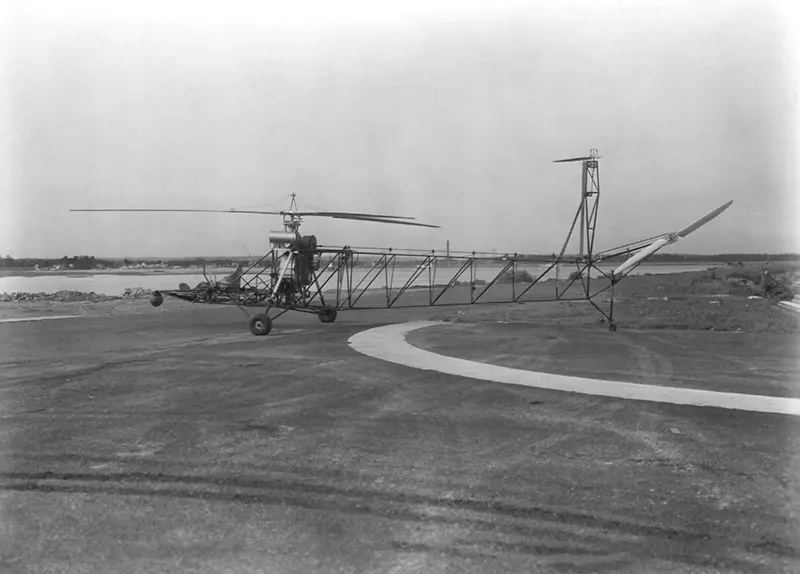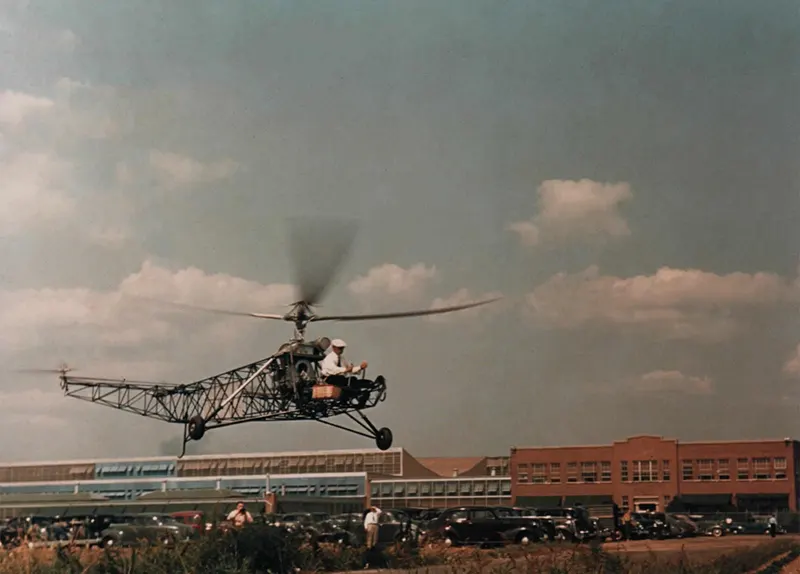On May 13, 1940, the VS-300 completed its inaugural “free” flight. Recognized as the inaugural American single main rotor helicopter, it lifted to a height of 15-20 feet and traversed 200 feet forward before hovering, reversing, and then safely landing. The original design, alongside its subsequent improvements, has greatly influenced the configuration of numerous features seen in today’s modern helicopters. Igor Sikorsky’s quest for a practical helicopter began in 1938, when as the Engineering Manager of the Vought-Sikorsky Division of United Aircraft Corporation, he was able to convince the directors of United Aircraft that his years of study and research into rotary-wing flight problems would lead to a breakthrough. His first experimental machine, the VS-300, was test flown by Sikorsky on 14 September 1939, tethered by cables. In developing the concept of rotary-wing flight, Sikorsky was the first to introduce a single engine to power both the main and tail rotor systems. For later flights of his VS-300, Sikorsky also added a vertical airfoil surface to the end of the tail to assist anti-torque but this was later removed when it proved to be ineffective. The cyclic control was found to be difficult to perfect, and led to Sikorsky locking the cyclic and adding two smaller vertical-axis lifting rotors to either side aft of the tailboom. By varying the pitch of these rotors simultaneously, fore and aft control was provided. Roll control was provided by differential pitching of the blades. In this configuration, it was found that the VS-300 could not fly forward easily and Sikorsky joked about turning the pilot’s seat around. Sikorsky fitted utility floats (also called pontoons) to the VS-300 and performed a water landing and takeoff on 17 April 1941, making it the first practical amphibious helicopter. On 6 May 1941, the VS-300 beat the world endurance record held by the Focke-Wulf Fw 61, by staying aloft for 1 hour 32 minutes and 26.1 seconds. A two-seater version was delivered to the US Army in May 1942. The final variant of the VS-300 was powered by a 150 hp Franklin engine. The VS-300 was one of the first helicopters capable of carrying cargo. The VS-300 was modified over a two-year period, including the removal of the two vertical tail rotors, in 1941, when a new cyclic control system gave it much-improved flight behavior. In 1943, the VS-300 was retired to the Henry Ford Museum in Dearborn, Michigan. It has been on display there ever since, except for a trip back to the Sikorsky Aircraft plant for restoration in 1985. The VS-300’s success and the lessons learned from its development laid the groundwork for further advancements in helicopter technology. Sikorsky’s continuous work and experimentation eventually led to the creation of more sophisticated and capable helicopters, shaping the modern rotorcraft industry.
(Photo credit: Wikimedia Commons / Flickr / Sikorsky Aviation History via sikorskyarchives.com). Notify me of new posts by email.
Δ Subscribe




